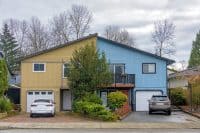
The National Association of Realtors (NAR) reports that the seasonally adjusted annual rate of existing-home sales in April dipped 0.4% to a seasonally adjusted annual rate of 5.19 million from 5.21 million in March. Sales remain down 4.4%, compared to April 2018 sales of 5.43 million.
February sales had soared nearly 12% year over year, the largest annual gain since December of 2015. March sales tumbled 4.9%, a predictable reaction to the February boom. April’s sales dip, though not a big concern, was well below the consensus estimate for April sales of 5.35 million, according to a survey of economists polled by Bloomberg.
The NAR’s chief economist, Lawrence Yun, said:
First, we are seeing historically low mortgage rates combined with a pent-up demand to buy, so buyers will look to take advantage of these conditions. Also, job creation is improving, causing wage growth to align with home price growth, which helps affordability and will help spur more home sales.
Existing-home sales closed 2018 with a seasonally adjusted December total of 4.99 million in 2018. The seasonally adjusted number for December 2017 was 5.56 million.
Housing inventory increased by 9.6% in April to 1.83 million homes, equal to a supply of 4.2 months, up by 0.4 months compared with March. Inventory is up from four months year over year in April 2018.
According to the NAR, the national median existing-home price for all housing types in April was $267,300, up 3.6% compared with April 2018, the 86th consecutive month of rising home prices. In January, the national median price was $247,500.
The percentage of first-time buyers dipped from 33% in March to 32%. First-time buyers also accounted for 33% of sales in April 2018. For all of 2018, first-time buyers accounted for 33% of sales.
Sales of single-family homes slid from a seasonally adjusted annual rate of 4.67 million in March to 4.62 million in April and are down 4% compared with April 2018. Sales of multifamily homes rose 5.6% month over month to a seasonally adjusted annual rate of 570,000 units, but they remain 8.1% below the April 2018 average.
All homes were on the market for an average of 24 days in April, down by 12 days month over month and down from 26 days in April 2018. Distressed sales, foreclosures and short sales accounted for 3% of all April sales, unchanged compared with the prior month and down from 4% in April last year.
The NAR also reported the following regional data.
April existing-home sales in the Northeast declined to an annual rate of 640,000 and were down 4.5% compared with April 2018 sales. The median price in the Northeast was $277,700, up 0.9% compared with the same month last year.
In the Midwest, existing-home sales remained flat compared with last month at an annual rate of 1.17 million, down 7.9% compared with the April 2018 rate. The median price in the Midwest was $210,500, up 5.5% from a year ago.
Existing-home sales in the South dipped 0.4% in April to an annual rate of 2.27 million and were down 1.7% compared with April 2018 sales. The median price in the South was $236,800, up 4.4% from a year ago.
Existing-home sales in the West rose 1.8% to an annual rate of 1.11 million in April but are down 5.9% compared with April 2018 totals. The median price in the West was $395,100, up 1.3% compared with the April 2018 median.
Homebuyers may want to avoid the worst cities to live in every state, as well as the worst counties to live in. But check out the 25 most affordable housing markets in the United States.
100 Million Americans Are Missing This Crucial Retirement Tool
The thought of burdening your family with a financial disaster is most Americans’ nightmare. However, recent studies show that over 100 million Americans still don’t have proper life insurance in the event they pass away.
Life insurance can bring peace of mind – ensuring your loved ones are safeguarded against unforeseen expenses and debts. With premiums often lower than expected and a variety of plans tailored to different life stages and health conditions, securing a policy is more accessible than ever.
A quick, no-obligation quote can provide valuable insight into what’s available and what might best suit your family’s needs. Life insurance is a simple step you can take today to help secure peace of mind for your loved ones tomorrow.
Click here to learn how to get a quote in just a few minutes.
Thank you for reading! Have some feedback for us?
Contact the 24/7 Wall St. editorial team.


